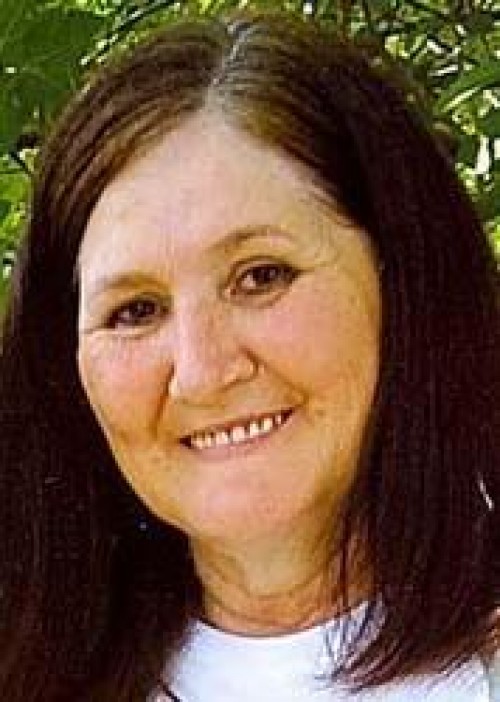
Edna Stewart
March 15, 2011
Is Our Seafood Safe?
March 17, 2011Members of the Louisiana Legislature will meet in special session beginning Sunday for an anticipated bloody bout over reapportionment and redistricting.
Since learning at the end of last year that Louisiana will be losing a congressional seat, based on population changes, and looking toward the redrawing of lines for state legislators, educational districts, public service offices, judicial appointments and changing the congressional count from seven to six districts, passions have raged over who will be likely to gain and who will probably lose when the numbers are tabulated and lines drawn.
This gathering of state house and senate members is the first time in Louisiana history that the elected bodies have called themselves back to work early. The session is scheduled to run until April 13 if needed.
Because statewide elections take place in autumn of 2011, and a statutory pre-clearance deadline – yet to be announced – is required to be met, legislative districts will need to be enacted by Aug. 29.
The regular state legislative session is set for April 25 through June 23. By state law that alternates basic agendas for lawmakers, this regular session will focus exclusively on budgetary issues. Redistricting matters may not be officially addressed during that period.
Since January, committees have set rules for the redistricting process, census data has been examined and public hearings were conducted with no resolutions but plenty of opinions expressed to complicate the task at hand.
Even area legislators have been at odds over how to approach redistricting and speculation has raged over who the winners and losers might be once a final package is delivered.
“Obviously, this is going to be a very contentious session regarding redistricting and reapportionment,” said state Rep. Damon Baldone (D-Houma).
“There is a push to keep Terrebonne and Lafourche [parishes] together and there are some forces that want to split Terrebonne and Lafourche. Some want to put us together with New Orleans or split us up all together, and that is not good,” Baldone said.
“My goal is to keep Terrebonne and Lafourche together,” said state Rep. Jerome Richard (I-Thibodaux).
Richard said that various meetings among regional legislators have taken place and that they have attempted to offer maps, based on population requirements, that might satisfy their colleagues from other parts of the state – all of whom have their own interests in relation to the regions they represent.
“A few of us [have] come up with a plan that might put us together with East Baton Rouge. That’s going to be something different,” Richard said. “We have been trying to come up with this coastal parish [congressional] district, but if that doesn’t fly we want to come up with a Plan B. That would be to put us either in Baton Rouge or the Northshore district.”
State Rep. Jerry Gisclair (D-Larose) said that a first series of alternative district maps he saw were unacceptable, but is among those that hopes whatever happens Lafourche and Terrebonne parishes will remain together in representation.
“We are hoping we can hold our districts,” Gisclair said. “It’s not our fault that Orleans and St. Bernard [parishes] lost population. [They] shouldn’t encroach on our districts to make up for numbers.”
Rep. Joe Harrison (R-Gray) spearheaded a plan that called for an entire coastal congressional district. The plan garnished both strong support and equally strong opposition as such a proposal could ultimately put Congressmen Jeff Landry (R-New Iberia) and Charles Boustany (R-Lafayette) facing each other in effort to keep their respective jobs. It could also heavily influence the power structure and workloads of state legislators.
“Redistricting is going to be tough this year,” Harrison said. “Looking at the preliminary [proposals] I was not happy with it, [as] I’m going from three parishes to four. I have one of the largest geographic districts in the state in travel. To go into a fourth parish is overwhelming to me. Even if you have part of a parish you are representing the whole parish.”
Harrison noted that he wrote the original single coastal congressional plan that has been debated outside official legislative sessions. He added that he has also developed a proposed districting map that would comprise two coastal congressional districts with the vertical dividing line between Iberia and St. Mary parishes.
“The second plan, was the one I really wanted to bring out, but I wanted to wait and see who our enemies were,” Harrison said. “Now that I know who they are I can take the second plan out. The numbers look like they are good.
“What we’re saying is that south Louisiana has the population and the issues and that we have the majority vote and we should be the ones ruling where the districts should be set. So, now I’m looking at two districts that would go along the coast – one going east and one going west.”
While some legislators from various regions of the state have pooled their efforts, others have taken a more independent stance.
“My goal is to keep St. Mary and Assumption [parishes] whole and continuous with Dist. 21,” state Sen. D.A. “Butch” Gautreaux (D-Morgan City) said.
Gautreaux, who also represents about one third of Terrebonne Parish and small portions of Lafourche and St. Martin parishes, said he was not bothered about what might happen in those areas.
“The local parishes have asked me to do all I can not to divide them, but to keep the parishes together with all St. Mary and Assumption. I’m not really concerned about the rest of it. Whatever Terrebonne needs to do or Lafourche or St. Martin needs to do, that’s fine,” Gautreaux said.
The most combative of legislators approached for comment on the redistricting and reapportionment session was state Sen. Norby Chabert (D-Houma).
“First and foremost, we would like to see Terrebonne and Lafourche remain together, [but] that is proving to be increasingly difficult to pull off,” Chabert said.
When asked about other legislators working to come up with proposed districting options, Chabert said those efforts were a waste of time.
“I think it is foolish to think anybody can offer an alternative. These lines are going to be drawn by the numbers. It’s not like Sen. Norby Chabert is going to come up with a plan and that is going to be the plan,” he said.
When asked if he had previewed the numbers and what he sees the hard figures telling him about redistricting, Chabertsaid.
“I want to see Lafourche and Terrebonne together, but, again, that is proving difficult to do.
“We had 60-plus [state districts] that have lost population or are above the numbers. Everybody was affected one way or another,” Gisclair said while he explained the heated passion being expressed by many legislators.
“The coastal district was a nice plan in concept, but in reality Lake Charles does not want to lose Cameron [Parish] because of the Calcasieu River, which I fully understand. We have to see what is best for our area. But we have to keep Lafourche and Terrebonne together whether we go north, northeast or east. I’m open to looking at more maps than the first one or two they come up with,” Gisclair said.
“I think we will have some version of [a coastal congressional district],” Baldone said. “I don’t know that we can go all the way from Texas to Mississippi, but I think we can get 80 percent of the coastal parishes involved in one congressman. That’s just the reality of it.”
Chabert had an opposing view of reality. “There is no logic to this,” he said. “It is purely political and the will of the [redistricting] committee. And the chairmen of both houses, respectively, are going to draw lines and see if they can get the votes to pass those lines.”
“No. 1, congressional redistricting doesn’t even have to be done this year,” Chabert said. “There is a strong case that it will not be done this year for all the reasons I’ve already mentioned. The only things we have to draw, all right, are BESE lines, state senate lines and state house lines, because those elections are in the fall. Congress can be pushed off a year.”
Chabert did agree on one level with his regional delegation. That being, their view that reduction in district geography should more seriously be aimed in the direction of the state’s two northern districts – where both had the greatest population loss – rather than shuffling southern districts in an effort to reduce one region of representation.
Chabert also said because of the political seniority of Congressmen Rodney Alexander (R-Quitman) and John Fleming (R-Minden), the likelihood of their districts being cut or combined is not likely to occur.
“In the end of the day, that’s the root of all evil in this whole damn thing, is a lot of people in powers want to keep those two districts in north Louisiana in tact,” Chabert said. “But unfortunately, like I said, both chairmen from both houses are from north Louisiana. It’s in their interest to preserve those districts. Rodney’s [Alexander] is the most powerful man. If I had my want, what you asked earlier about shaking everything out, if I [were] the man in charge I would make those two congressmen in north Louisiana fight it out in a unified district somehow. Do I think that’s going to happen? No.”
“I think the [session] will be wide open,” Richard said. “By the time we meet and it goes to committee there is going to be four or five plans out there, and it is going to come down to what the committees want. It sounds like the committees are going to take a vote on these things.”
“Our issues on the coast are not just state issues, they are national,” Harrison said. “You have to fight for it because it is a 10-year process. We have the best opportunity to keep growing as a population. North Louisiana doesn’t.”
“North Louisiana, we love them, they are one of us, but we have nothing in common with them,” Baldone said. “We’ve had some growing pains, but we will survive and have good representation.”









